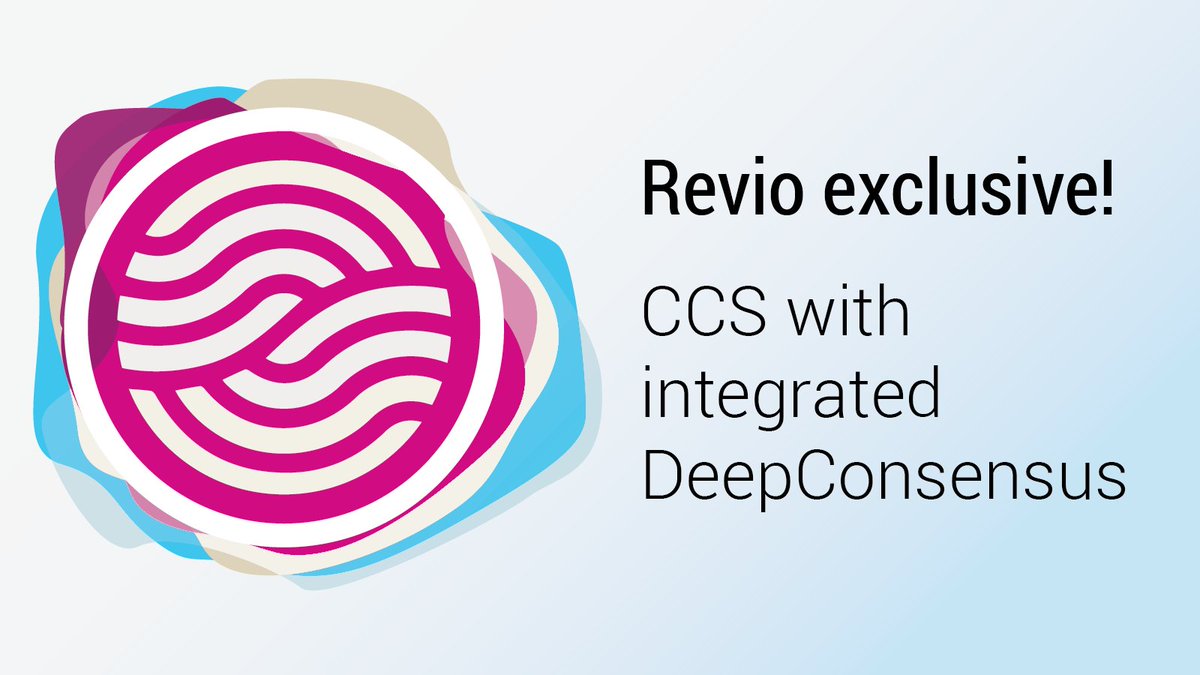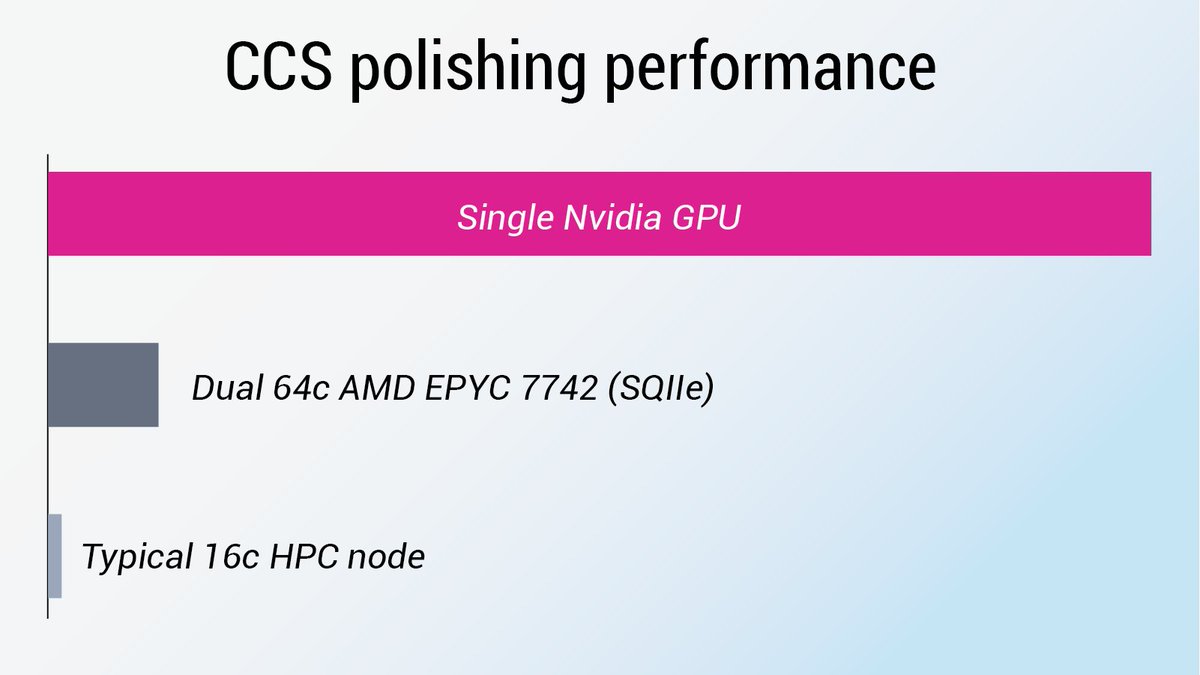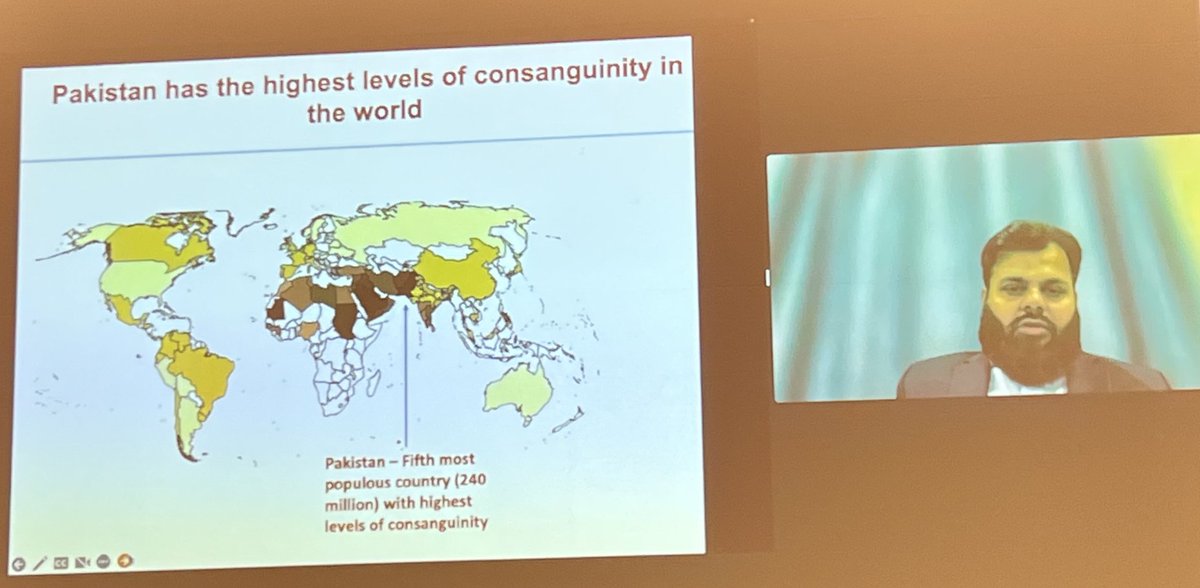Discover and read the best of Twitter Threads about #ashg22
Most recents (22)
One thing that stood out for me at the #ASHG22 is that now there is more emphasis being given to genetic diversity in the context of ancestry and its impact on human health. 🧵
It is often considered taboo to talk about phenotypic differences across genetic ancestries. While it is true that many of these differences are environmental in origin, there is sometimes a genetic component as well.
Irrespective of their origins, the fact that there are phenotypic differences (especially in terms of disease risks) between genetically defined groups requires attention. This knowledge can help doctors and scientists improve the quality of health care.
Fantastic talk by @kapoormanav on the genetic architecture of South Asian Indian population based on analysis of more than 15,000 exomes from Rajasthan and Maharashtra states of India. #ASHG22
India is one of the most diverse country in the world with 22 official spoken languages, ~3000 castes, 25,000 sub castes and a population size of 1.4 billion. And yet India is one of the most underrepresented countries in the genetic studies.
The extreme diversity in terms language, caste and culture makes Indian population so unique as these factors have sculpted the genetic architecture of Indians over hundreds to thousands of years.
Maureen Pittman #ASHG22: Oligogenic inheritance describes situations were there are some loci (more than one, less than thousands) that contribute to a disease.
Congenital heart disease (CHD) is potentially one of these situations.
Congenital heart disease (CHD) is potentially one of these situations.
Maureen Pittman #ASHG22: Example of a family where GATA6 was passed on from an unaffected parent to a child with CHD. Common variants don't seem to contribute much -- could it be due to other rare variants?
Maureen Pittman #ASHG22: Oligogenic genes are presumed to have related functions and could potentially compensate for each other or could interact, etc.
But finding oligogenic gene examples has been hard due to all of the combinations you have to test.
But finding oligogenic gene examples has been hard due to all of the combinations you have to test.
Graham Erwin (@grahamserwin) #ASHG22: Half of the human genome is repetitive, most are transposons but about 3% is made up of tandem repeats. Tandem repeats cause >40 human diseases.
Graham Erwin (@grahamserwin) #ASHG22: Friedreich's ataxia is caused by a triplet expansion in the first intron of FXN gene. Patients have 70++ repeats, which leads to lower expression/protein levels.
Graham Erwin (@grahamserwin) #ASHG22: Polyamides bind to DNA specifically and are very small (cell permeable). Prior example to tie one of these to a factor that would lead to higher transcription.
pubmed.ncbi.nlm.nih.gov/29192133/
Now want to target other repeats.
pubmed.ncbi.nlm.nih.gov/29192133/
Now want to target other repeats.
Scott Younger #ASHG22: Genomic Answers for Kids (GA4K). Currently have >10k subjects enrolled and have returned ~1k diagnoses.
Focus here is large scale assays, specifically establishing a protocol to do patient-derived iPSC reprogramming at scale. Have generated 250 iPSC lines
Focus here is large scale assays, specifically establishing a protocol to do patient-derived iPSC reprogramming at scale. Have generated 250 iPSC lines
Scott Younger #ASHG22: Using antisense oligonucleotides (ASOs) to modulate gene expression. Proof of their use in TNNT2 gene.
Scott Younger #ASHG22: Robust restoration of dystrophin expression in DMD-patient organoids when applying a DMD-targeting ASO. Phenotypes restored as well (beating cells in dish).
Yi Ding (@yi_ding_) #ASHG22: Polygenic scoring estimates genetic value by aggregating signal across many loci. Potential for polygenic scores has already been well established -- but so have the challenges, especially the low accuracy in non-European populations.
Now on in the plenaries -- Catherine Robertson #ASHG22: Beta cells in the islets of the pancreas produce insulin. Type 1 diabetes is defined by loss of insulin production due to cell death or dysfunction. Disease risk is both genetic and environmental.
Catherine Robertson #ASHG22: Many common variants tied to T1D, but causal variants are hard to find -- some seem to impact cis-regulatory processes.
Now doing single cell/nuclei RNA-seq, ATAC-seq, and 5' RNA-seq.
Now doing single cell/nuclei RNA-seq, ATAC-seq, and 5' RNA-seq.
Catherine Robertson #ASHG22: Nice overlap of all three data types for the PDX1 locus. Can describe regulatory processes across various cell types or stimuli +/-.
Hypothesis: T1D variants alter regulatory processes in islets.
Hypothesis: T1D variants alter regulatory processes in islets.
Jazlyn Mooney (@Jazlyn_Mooney) #ASHG22: Want to trace the genealogical ancestors in African American individuals. 1870 census was the first collected to have more detailed information on African Americans in the US -- but still not a lot. Many do not know their roots.
Jazlyn Mooney (@Jazlyn_Mooney) #ASHG22 draws a distinction: genealogical and genetic ancestors are not the same.
Can use ancestry proportions from the present to estimate the number of ancestors from each source population in past. Implementing a mechanistic model of admixture
Can use ancestry proportions from the present to estimate the number of ancestors from each source population in past. Implementing a mechanistic model of admixture
Jazlyn Mooney (@Jazlyn_Mooney) #ASHG22: Model estimates the number of genealogical ancestors. Applying to African American ancestry individuals. Slave trade moved many individuals to the Americas. Shows time epochs on the model (slave trade, slavery, segregation era).
Alex Diaz-Papkovich #ASHG22: Genetic data has structure due to geography, non-random mating, culture, etc. Visualization helps with this, but how do we delineate these clusters?
Alex Diaz-Papkovich #ASHG22: Genetic data is very noisy and we frequently may not know how many clusters truly exist. Clustering is also open to misinterpretation -- clusters are useful but are abstractions!
Alex Diaz-Papkovich #ASHG22: Notes that UMAP isn't a clustering algorithm. HDBSCAN is the algorithm used to cluster in this talk -- unsupervised and works well with UMAP data.
Layla Sirag #ASHG22: GWAS have found thousands of common genetic variants associated with common diseases. Functional evaluation of these have been harder, especially since many are noncoding.
Layla Sirag #ASHG22: Even with an association, finding the causal variant is hard. Fine-mapping gives variants a posterior inclusion probability (PIP) that identifies a smaller set of likely causal variants.
Would be great to test every possible nucleotide, but likely impossible
Would be great to test every possible nucleotide, but likely impossible
Layla Sirag #ASHG22: Here, testing fine-mapped variants for function with a massively parallel reporter assay. Using 6 cell lines to represent different tissues. Looking for impacts on gene expression or allelic skew.
Moez Dawood (@MoezDawood) #ASHG22: Saturation genome editing for PALB2.
Want to test every SNV in haploid cells lines. Cell viability is the read out here and is turned into a functional score. Classically applied to BRCA1. Now applying to another breast/ovarian cancer gene.
Want to test every SNV in haploid cells lines. Cell viability is the read out here and is turned into a functional score. Classically applied to BRCA1. Now applying to another breast/ovarian cancer gene.
Moez Dawood (@MoezDawood) #ASHG22: 99% of PALB2 SNVs are considered VUS in ClinVar [seems really high -- but maybe expected when you have all]. Could be that there are only a few pathogenic variants here. SGE should be well suited here.
Moez Dawood (@MoezDawood) #ASHG22: 10.6k SNVs + 3.6k 3-base deletions in PALB2 tested.
Some missense variants in exon 2 seem to get worse (via scores) as the time course goes on but remain in between syn and nonsense dist. Suggest they are hypomorphic / incompletely penetrant?
Some missense variants in exon 2 seem to get worse (via scores) as the time course goes on but remain in between syn and nonsense dist. Suggest they are hypomorphic / incompletely penetrant?
Ayesha Muhammad #ASHG22: Focusing on cardiac QT interval -- rare variants can prolong this and lead to fatal arrhythmia. Genes: KCNE1 + KCNQ1 jointly form a transmembrane channel. Issues can either be: non-interaction or not making it to the proper location.
Ayesha Muhammad #ASHG22: Functional assays for KCNE1 -- library had 96% of all SNVs. Can also look for loss- vs gain-of-function.
Few notes: nonsense variants after residue 57 do not impact trafficking. See more gain-of-function than what was known already.
Few notes: nonsense variants after residue 57 do not impact trafficking. See more gain-of-function than what was known already.
Ayesha Muhammad #ASHG22: Also applying functional assays to KCNQ1.
KCNQ1 trafficking assay highlights known important functional domains (e.g. transmembrane domains) as well as a terminal domain [that I missed].
Would like to supplement PS3/BS3.
KCNQ1 trafficking assay highlights known important functional domains (e.g. transmembrane domains) as well as a terminal domain [that I missed].
Would like to supplement PS3/BS3.
Tian Yu #ASHG22: Reminding us all about the problem of finding lots of variants of uncertain significance (VUS). Even in well known genes, majority of missense variants end up as VUS.
Tian Yu #ASHG22: Functional scores from assays may still be prone to noise + don't cover all possible variants.
Functional Substitution Estimate (FUSE) pipeline to make functional assays for variants not covered + improve individual variant estimates.
Functional Substitution Estimate (FUSE) pipeline to make functional assays for variants not covered + improve individual variant estimates.
Tian Yu #ASHG22: Estimate positional mean effect at each codon and can make an amino acid substitution matrix (FUNSUM) --> combine to FUSE estimate scores.
Daniel Jordan (@DrDanielJordan) #ASHG22: Variant effect prediction treat things as binary (pathogenic/benign) but doesn't take into account severity, penetrance, or mode of inheritance.
Daniel Jordan (@DrDanielJordan) #ASHG22: Predicting recessive variants is hard to do since the variant is not functional in most carriers.
MOI-Pred: multi-class classification for variants -- benign, pathogenic dominant, pathogenic recessive.
MOI-Pred: multi-class classification for variants -- benign, pathogenic dominant, pathogenic recessive.
Daniel Jordan (@DrDanielJordan) #ASHG22: Trained a random forest ensemble learner. Reminds us that any ML method is only as good as training data. Used ExoVar, OMIM as pathogenic, gnomAD at benign.
Independent validation using ClinVar and GEMJapan for novel common variants.
Independent validation using ClinVar and GEMJapan for novel common variants.
Now up is Lily Wang (working with @TalkowskiLab + me) on identifying regions within genes that are specifically intolerant to missense mutations. #ASHG22
Lily Wang #ASHG22: Scalability of functional assays remains a challenge -- still a space for in silico predictors to help variant interpretation. This is particularly important for missense variants.
Lily Wang #ASHG22: Phenotype-agnostic approach to identify potentially pathogenic variants is looking for genes/regions intolerant to missense mutations (constrained). For missense, regions may be more critical since we know pathogenic missense variants can cluster in genes.
Nicholas Popp #ASHG22: Multiplexed assays allow us to identify functional effects of thousands of variants in parallel. Growth assays have been popular, but won't work for all genes. Secreted genes won't work in these assays and they represent ~10% of all genes in genome.
Nicholas Popp #ASHG22: Factor IX (F9) gene is a common cause of disease -- specifically missense variants, which we struggle to interpret.
Built a cell surface display system to evaluate F9 variants.
Built a cell surface display system to evaluate F9 variants.
Nicholas Popp #ASHG22: Can be used for other secreted proteins [love a generalizable framework].
Tested ~10k missense variants in F9
- 3 distinct mutational signatures in signal peptide
- mutating cysteines results in near complete loss of function
Tested ~10k missense variants in F9
- 3 distinct mutational signatures in signal peptide
- mutating cysteines results in near complete loss of function
Greg Findlay (@TheGenomeLab) #ASHG22: Von Hippel-Lindau (VHL) is a tumor suppressor gene that is tied to renal cancers (somatic mutations), VHL disease or cancer predisposition (germline mutations).
Greg Findlay (@TheGenomeLab) #ASHG22: >700 VUS in ClinVar. Using saturation genome editing to test all possible variants in a single experiment. Here looking at ~2k variants in VHL.
High correlation between replicates: clean data 👍
High correlation between replicates: clean data 👍
Greg Findlay (@TheGenomeLab) #ASHG22: Nonsense variants only seem to have an impact ("drop out") after Methionine 54.
Missense variants drop out if they occur in a beta sheet (exon 2) or alpha helices (exon 3).
Missense variants drop out if they occur in a beta sheet (exon 2) or alpha helices (exon 3).
Carina Biar #ASHG22: ML + genome editing to resolve variants of uncertain significance (VUS) in TSC2 gene.
Starts with the mTOR pathway and a reminder that we have a skyrocketing number of VUSes as we continue to do genomic testing.
Starts with the mTOR pathway and a reminder that we have a skyrocketing number of VUSes as we continue to do genomic testing.
Carina Biar #ASHG22: Wants to use machine learning to predict pathogenicity. Train on a per-gene basis and used ~40 features.
Gene-model does better (86%) than CADD (65%) when testing on known P/LP variants. Benign variants not as easily classified.
Gene-model does better (86%) than CADD (65%) when testing on known P/LP variants. Benign variants not as easily classified.
Carina Biar #ASHG22: CRISPR to knock variants of interest in TSC2 into haploid cell lines. FACS sort + sequence to look for mTOR activity (functional assay here since part of the same pathway).
[ Previous work is here: pubmed.ncbi.nlm.nih.gov/35773235/ ]
[ Previous work is here: pubmed.ncbi.nlm.nih.gov/35773235/ ]
Up bright and early for day 2 of #ASHG22. Looking forward to more science and catching up with colleagues in sunny LA!
Also: I am looking to grow my team in Boston and have open positions across various levels, and would love to chat with anyone who is interested in studying patterns of rare variation in large genomic datasets. #ASHG22
Reach out or find me if interested!
Reach out or find me if interested!
If you are curious about the type of work we do, please come see a talk by phenomenal graduate student Lily Wang this morning at 9:30am.
ProgNbr 116: "The landscape of regional missense mutational intolerance quantified from 125,748 exomes" in Petree C.
ProgNbr 116: "The landscape of regional missense mutational intolerance quantified from 125,748 exomes" in Petree C.
Have you heard about Revio by @PacBio at #ASHG22? It is such an amazing platform, 4x30-fold HiFi human genomes every 24 hours. Let me show you what it took to get this bioinformatics performance on the instrument. A thread on CCS GPU acceleration and DeepConsensus productization. 

The team behind CCS has been working hard for the past years to reduce runtime massively for the initial SQIIe and subsequent releases. We pulled all tricks to get the CPU code as fast as possible, but Revio is a completely different beast. Generating 90Gb HiFi per SMRT Cell 25M! 

The polish algo in CCS is an HMM, filling out matrices at its core. The nature of its operations makes an efficient GPU implementation challenging. We’ve ported it completely onto @nvidia GPUs and achieved a 10x speedup over a dual 64c AMD EPYC, easily the fastest HMM on GPU. 

Danish Saleheen stunned the audience with his story of building the world's largest cohort of human knockouts in Pakistan, which is the world's 5th most populous country with highest level of consanguinity ever known. #ASHG22 #DRIFT22 

Starting with around 10k individuals sequenced in 2017, now the cohort comprise of around 200k individuals recruited, of which 80,000 were exome sequenced. Goal is to sequence 1 Million.
nature.com/articles/natur…
nature.com/articles/natur…
Fantastic talk by @cdbustamante about an ambitious initiative to set up one of the world's largest diverse biobank with a focus on Latin American populations with a target sample size of 10 Million(!!). Welcome to the biobank of the Americas! #ASHG22
bbofa.org
bbofa.org
The motivation behind this massive undertaking is something that is obvious to the field: massive underrepresentation of Non-European populations in the genetic databases. 

The participants recruitment is targeted mainly in the Latin America and Caribbean diaspora that holds ~8% of the world population and comprise 700+ ethnic groups and yet represent <1% of the global genetic databases.

